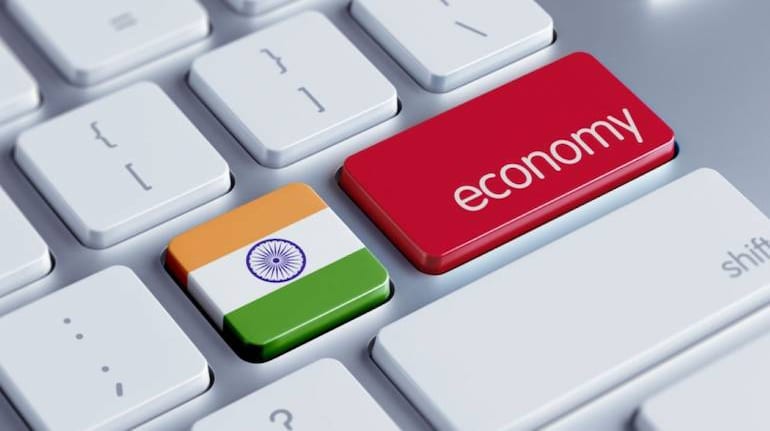



CRISIL retained its real GDP growth forecast for India at 7.3 percent in the current financial year, seeing positivity in certain pockets as the world grapples with inflation and growing recessionary fears.
However, the Indian unit of S&P Global also said there might be more downside risks to its forecast. CRISIL said the global economy, including India, faces a plethora of factors.
Crude, commodity prices
“The seemingly unending Russia-Ukraine war has wreaked havoc in the commodity markets because while freight costs have moderated of late, they are still elevated when compared with the beginning of this year (pre-war),” it said in a report dated July 01, 2022.
This suggests that a continuing war will prevent any meaningful correction. For India especially, this translates to higher import bills and higher inflation.
India is a major importer of crude oil, which is expected to average $105-110/barrel during this financial year, up 35 percent over the previous year and the highest since 2013.
According to the World Bank, “The increase in energy prices over the past two years has been the largest since the 1973 oil crisis and the price increase for fertilisers, which rely on natural gas as a production input, has been the largest since 2008.”
High commodity prices have a domino effect on India. As the terms of trade worsen with a rising import bill, imported inflation surges.
Other global factors
The International Monetary Fund has lowered its global growth projections, which means India’s exports will likely get impacted.
“Then, there is the spectre of ‘stagflation’ looming large as systemically important global central banks use the sledgehammer of rate hikes to tame inflation,” CRISIL said.
Domestic private consumption
Apart from global factors, the revival in domestic private consumption, a major demand-side driver, has not yet gained the expected momentum.
CRISIL sees three trends emerging from the recently released GDP data. Firstly, “a higher and broader-based inflation this fiscal will create a further drag on the private consumption revival.”
This is in sync with the Reserve Bank of India’s consumer confidence survey, which found that households “expected higher essential spending whereas the sentiments on non-essential spending remained downbeat.”
Secondly, a divergence in consumption.
“While the recovery in low-priced items remains weak, high-ticket items are seeing a much better uptick, which reflects the K-shaped nature of economic recovery,” CRISIL said in its report.
Thirdly, a possible rise in rural distress.
“Slower wage growth coupled with high inflation is denting rural purchasing power because not only has rural income growth slowed in nominal terms - from an average of 6.1 percent in fiscal 2021 to 4.1 percent in fiscal 2022, but real incomes have been declining, led by rising consumer price inflation,” CRISIL said.
The data revealed that the number of people seeking work under the Mahatma Gandhi Rural Employment Guarantee Act (MGNREGA) remains high, reflecting distress in the countryside.
Though some green shoots are visible on the capital expenditure/investment side, their growth is largely linked to the growth in domestic consumption.
Inflation
The outlook on food inflation has worsened considerably after an unnatural heatwave this year impacted the production of food grains, vegetables, and spices, including wheat and tomatoes. Wheat supply is particularly tight, while rice inventory in the country is at a comfortable level.
“The easing of food prices hereon will, among other aspects, depend on the quantum and spread of the monsoon and a normal monsoon could help ease prices in the second half,” CRISIL said. However, the monsoon’s intensity and distribution during the June-September rainy season will have an important bearing on production.
Some relief, however, is expected from easing edible oil prices after Indonesia revoked its ban on palm oil exports and India’s government provided import duty relief.
Domestic climate-related shocks affecting food supply even as the Russia-Ukraine war continues to put pressure on commodities worldwide have led to a deteriorating outlook.
The rating company expects retail inflation to average 6.8 percent this financial year from 5.5 percent in the previous year, which would be the highest level in nine years and above the RBI’s target range of 2-6 percent.
Current account deficit
CRISIL expects the CAD to widen to 3 percent of GDP this financial year, with imports becoming costlier due to higher commodity prices, while exports face slowing external demand.
India’s CAD, which is largely driven by the merchandise trade deficit, is expected to widen as imports increase faster than exports. Elevated commodity prices will have the largest bearing on imports, especially crude oil and petroleum products, which account for about 27 percent of India’s total imports.
On the other hand, exports easing due to a slowing global economy will be a double whammy for India’s CAD.
Silver linings
According to the report, there are a few bright spots in the form of an uptick in contact-intensive services, higher tax collections, and the forecast of a normal and well-distributed monsoon (though the steady distribution of the monsoon across the country remains to be seen).
“While higher tax collections are partly a result of higher inflation leading to higher nominal growth, they also reflect the healthy momentum observed in the first quarter of the current fiscal,” CRISIL said. “In fiscal 2022, gross value added in trade, hotels, transportation, etc., was still 11.3 percent below its pre-pandemic levels. But with the pandemic’s impact ebbing and large-scale vaccination coverage, this segment is recovering.”
Disclaimer: The views and investment tips of investment experts on Moneycontrol.com are their own and not those of the website or its management. Moneycontrol.com advises users to check with certified experts before taking any investment decisions.
Discover the latest Business News, Sensex, and Nifty updates. Obtain Personal Finance insights, tax queries, and expert opinions on Moneycontrol or download the Moneycontrol App to stay updated!